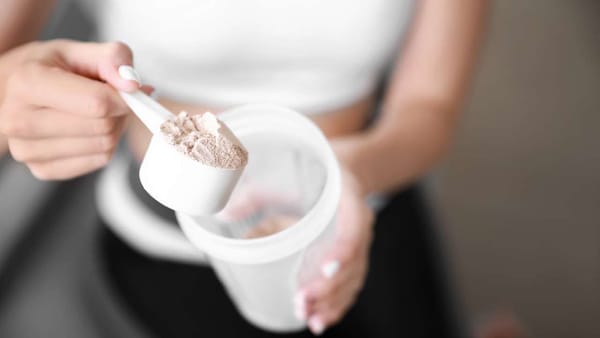Causes | Types | Contributing Factors | Prevention | Treatment | FAQs | The Final Mention
Are expression lines making you look older than you feel? Fear not, for we’ve got the ultimate guide to understanding, preventing, and treating those pesky fine lines and wrinkles! By understanding the causes of expression lines and their different solutions, you'll be well-prepared to maintain that youthful glow, regardless of age.
Key Takeaways:
- Knowing why expression lines form and how to treat them can help reduce their appearance.
- Seeking professional advice is important when treating expression lines for effective results and younger-looking skin.
- Sun protection, hyaluronic acid, facial exercises, and collagen supplements are skin care essentials that can effectively prevent the formation of wrinkles.
Understanding Expression Lines
Expression lines are the inevitable result of a lifetime of facial expressions, such as smiling, frowning, and squinting. But did you know that other factors like aging, sun exposure, and genetics also play a significant role in their development?
Understanding the causes of expression lines allows you to take preventative steps and evaluate the most effective treatments.
Facial Expressions and Skin Changes
It’s no secret that our faces are constantly in motion, expressing emotions and communicating with others. The downside to this is that repetitive facial expressions can lead to the formation of permanent creases in the skin’s surface, known as expression lines.[1] The development of these lines depends on factors such as collagen production and skin elasticity, with some individuals being more susceptible.
Aging and Skin Elasticity
Our skin loses elasticity as we age, leading to the development of expression lines and facial wrinkles. Delicate skin becomes more susceptible to damage from facial expressions and other factors, leading to the formation of deep wrinkles in aging skin.
Thankfully, there are numerous anti-wrinkle creams and treatments available that can help improve skin elasticity and reduce the appearance of these pesky lines.
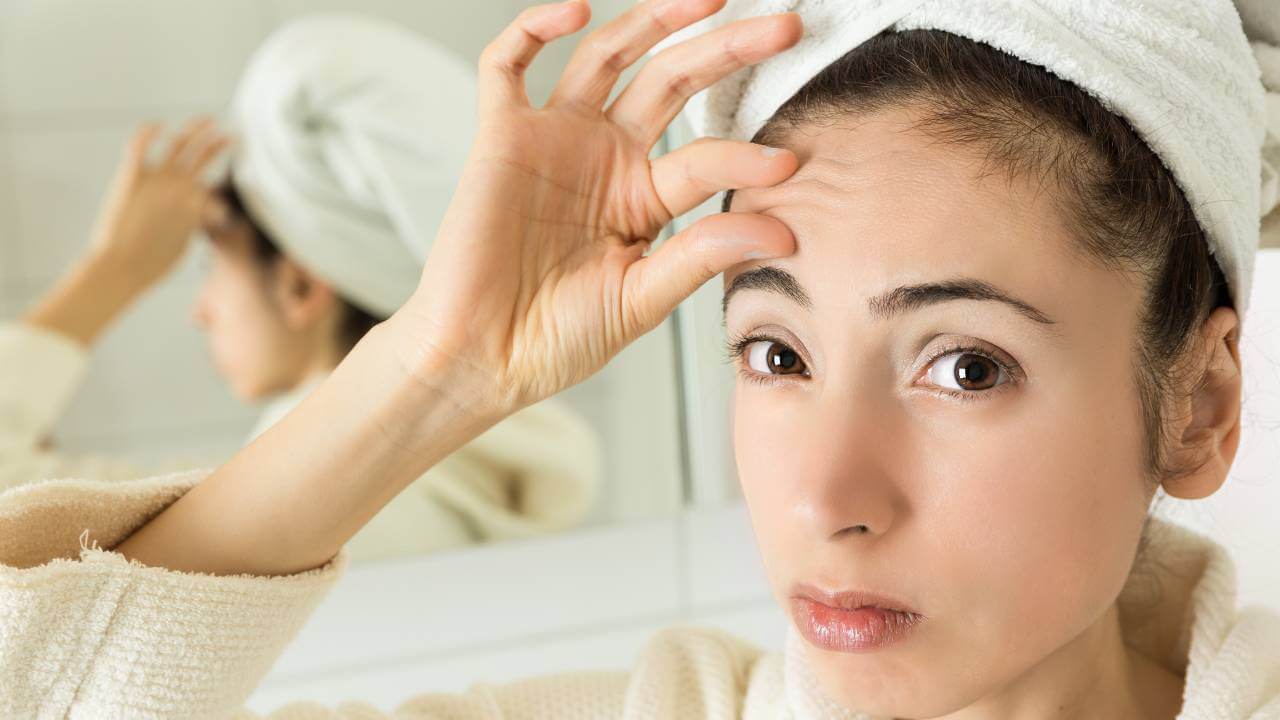
Common Types of Expression Lines and Wrinkles
Recognizing the different types of expression lines can aid in identifying and tackling these unwelcome signs of aging. The most common types of expression lines include:
- Smile lines
- Crow's feet
- Frown lines
- Forehead lines
- Neck wrinkles
Each of these lines and wrinkles forms in specific areas of the face due to repeated contractions of facial muscles and other factors such as genetics, collagen deficiency, and sun exposure.
While some may view fine lines and wrinkles as a natural part of aging, many individuals seek ways to prevent expression lines, reduce their appearance, and maintain a youthful look. Exploring prevention strategies and treatments allows you to manage your skin’s aging process and control the development of these troublesome lines.
Smile Lines and Laugh Lines
Smile lines, laugh lines, and lip lines are creases that form around the mouth as a result of facial expressions and the natural aging process. These lines, also known as nasolabial folds, can become more prominent over time due to constant muscle contractions from smiling or laughing.
Fortunately, treatments such as dermal fillers can help to plump the skin and reduce the appearance of smile lines, restoring a smoother, more youthful appearance.
Crow's Feet
Crow's feet are the small lines or wrinkles that appear at the outer corners of the eyes. They are a common sign of aging and are primarily caused by the natural loss of elasticity and collagen in the skin over time. These lines are also frequently formed by repeated facial expressions, such as laughing, smiling, or squinting.
While they are a natural part of aging, there are treatments available, such as retinoid creams, botox, or laser therapy, to reduce the appearance of crow's feet and keep the skin around your eyes looking youthful and vibrant.
Frown Lines and Worry Lines
Frown lines and worry lines are vertical creases that form between the eyebrows as a result of frequent facial expressions, such as frowning or furrowing the brow. These vertical lines can become deeper and more noticeable over time, due to the constant contraction and movement of the underlying facial muscles.
To reduce the appearance of frown lines and worry lines, consider incorporating sun protection, hyaluronic acid, facial exercises, and collagen supplements into your skincare routine.
Forehead Lines and Horizontal Lines
Forehead lines, horizontal lines, and vertical lines are creases that form on the brow due to the frequent contractions of the forehead muscles. These lines can become more pronounced with age and repeated facial expressions, making the skin appear less smooth and youthful.
Prevention strategies, such as dietary supplements and facial creams made with collagen for forehead wrinkles, can help to maintain skin elasticity and reduce the likelihood of these lines forming.
Neck Wrinkles and Jowls
Neck wrinkles and jowls are sagging skin and lines that form on the neck as we age. What causes jowls is influenced by factors such as decreased skin elasticity, exposure to UV light, and the breakdown of collagen and elastin.
A comprehensive skincare routine, including sunscreen and hydration, can help to prevent and reduce the appearance of neck wrinkles. In addition, laser treatments can stimulate collagen production and help to reduce the prominence of necklines.
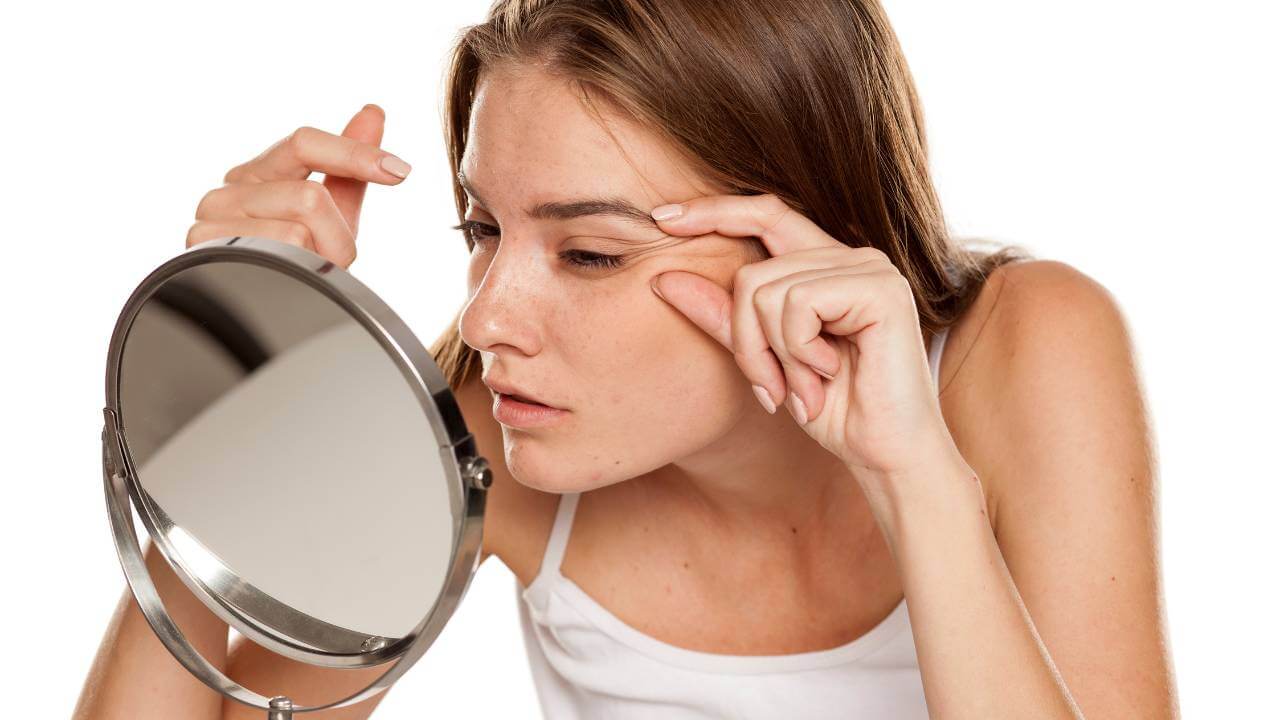
Factors Contributing to Expression Lines
Various factors contribute to the formation of expression lines, including:
- Genetics
- Lifestyle habits
- Collagen deficiency
- Sun exposure
Understanding the impact of these factors on your skin’s surface can help you take preventative measures and make informed decisions about the most suitable treatments for your unique needs.
Genetic Influence on Expression Lines
Genetics plays a significant role in the development of expression lines, with some individuals being more prone to them than others. Research has indicated that approximately 60% of skin aging, including wrinkles, is impacted by genetic factors.[2]
While it may not be possible to alter your genetic predisposition to expression lines, understanding your genetic makeup and its influence on your skin’s aging process can help you make informed decisions about prevention and treatment strategies.
Lifestyle Habits and Skin Health
Lifestyle habits, such as smoking, excessive sun exposure, and dehydration, can negatively impact skin health and contribute to the formation of expression lines. Smoking tobacco products, in particular, results in decreased collagen and elastin production, which can lead to the development of wrinkles.
By adopting healthier lifestyle habits and avoiding activities that can damage your skin, you can help prevent the formation of expression lines and maintain a youthful appearance.
Collagen Deficiency and Skin Glycation
Collagen deficiency and skin glycation can lead to a loss of skin elasticity and the formation of wrinkles. Collagen is essential for maintaining skin elasticity, while skin glycation is a process in which sugar molecules bind to collagen and elastin fibers, resulting in the degradation of the skin’s structure.
To prevent collagen deficiency and skin glycation, consider incorporating sun protection, hyaluronic acid, facial exercises, and collagen supplements into your skincare routine.
Sun Exposure and Skin Damage
Sun exposure and skin damage can accelerate the aging process and contribute to the development of expression lines. Ultraviolet (UV) radiation from the sun can cause premature aging, wrinkles, and other skin damage.
To protect your skin from sun exposure and its damaging effects, it is recommended to use sunscreen with a broad-spectrum SPF of 30 or higher, wear protective clothing, and limit time spent in direct sunlight.
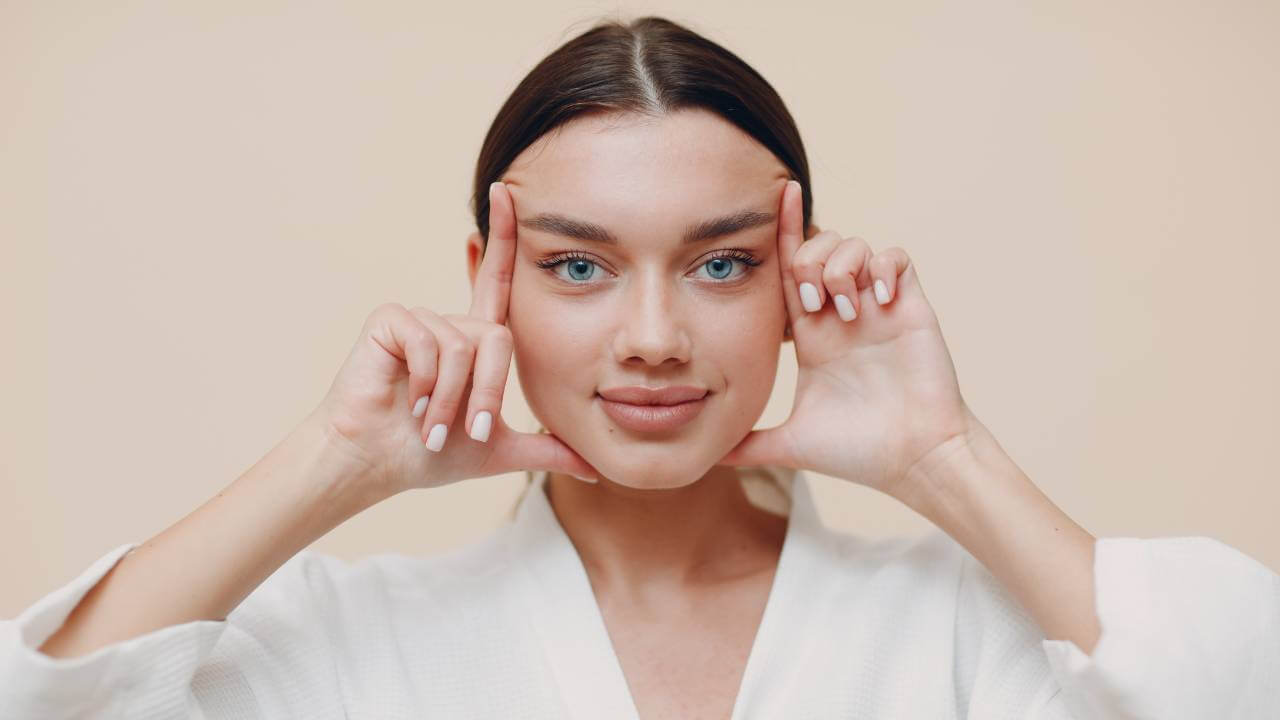
How to Prevent Expression Lines
Keeping fine lines and wrinkles at bay from the get-go is essential for maintaining a youthful, healthy complexion. By integrating the following strategies into your skincare routine, you can effectively diminish the visibility of expression lines and retain your skin's firmness and elasticity.
Sun Protection and SPF 30+
Sun protection is an essential component of any skincare routine, as it helps to shield the skin from the damaging effects of the sun’s ultraviolet (UV) rays. Using a sunscreen with a broad-spectrum SPF of 30 or higher can help to reduce the risk of:
- skin cancer
- sunburn
- premature skin aging
- other sun-related damage
By incorporating sun protection into your daily skincare routine, you can effectively prevent skin damage and the development of expression lines.
Hyaluronic Acid and Polypeptides
Hyaluronic acid and polypeptides are powerful skincare ingredients that can help maintain skin hydration and elasticity, ultimately preventing the formation of wrinkles.[3] Hyaluronic acid is a naturally occurring substance in the body that assists in maintaining moisture and lubrication of tissues such as the skin.
Polypeptides, on the other hand, are chains of amino acids that help to promote collagen production and improve skin elasticity. Using products containing hyaluronic acid and polypeptides for skin care can effectively prevent the formation of expression lines and maintain a youthful appearance.
Facial Exercises and Muscle Relaxation
Facial exercises and muscle relaxation techniques can strengthen muscles and tighten skin, thereby reducing the occurrence of fine lines and wrinkles caused by repeated facial expressions. These exercises can be particularly beneficial for individuals who are prone to developing expression lines due to genetics or lifestyle habits.[4]
By practicing facial exercises and muscle relaxation techniques, you can help to maintain a smoother, more youthful appearance and minimize the appearance of expression lines.
Collagen Supplements
Collagen supplements can support skin health and elasticity, helping to prevent the formation of expression lines and sagging skin. Collagen is a naturally occurring protein in the body that plays a crucial role in maintaining skin elasticity and firmness.
Taking a collagen supplement for sagging skin can:
- Help to replenish your body’s collagen levels
- Maintain the elasticity and firmness of your skin
- Prevent the formation of fine lines and wrinkles
- Support a more youthful appearance
Collagen supplements are available in various forms, including pills, powders, liquids, and even collagen gummies, making it easy for you to incorporate them into your daily routine. However, it's important to remember that while these supplements can support your skin health, they should not replace a balanced diet and a good skincare routine.
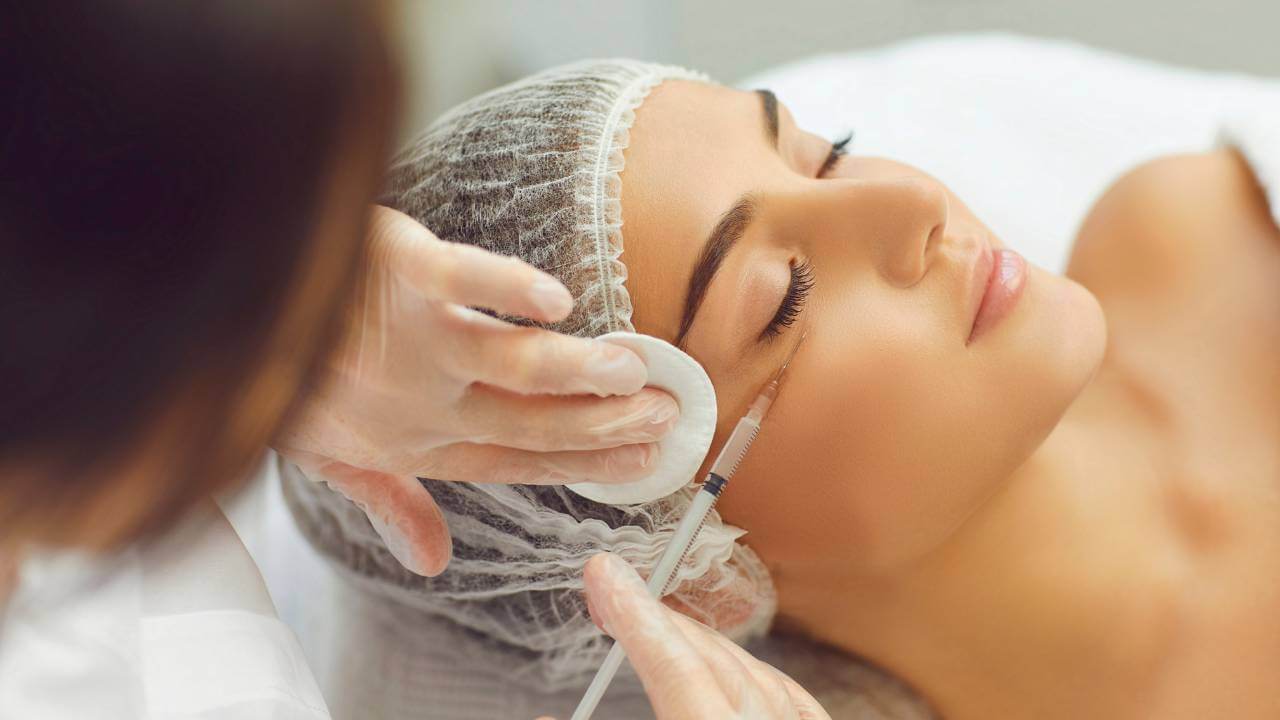
Treating Expression Lines
Although prevention is the optimal strategy for maintaining a youthful look, it’s always possible to address existing expression lines and wrinkles. There are various at-home remedies, professional treatments, and injectable treatments available to help reduce fine lines and wrinkles to restore a smoother, more youthful appearance.
Exploring these treatments and finding the best option for your specific needs can effectively counteract the signs of aging and maintain a healthy, youthful complexion. Keep in mind, consulting with a skincare professional before undergoing any treatment is vital to ensure visible results and minimize any potential risks.
At-Home Remedies for Expression Lines
At-home remedies for expression lines include:
- Gentle cleansing: involves using a mild cleanser and lukewarm water to effectively cleanse the skin.
- Moisturizing: helps to maintain hydration and prevent dryness.
- Exfoliating: assists in promoting the emergence of younger, healthier skin cells.
- DIY face masks: made from natural ingredients such as honey, yogurt, and avocado, can nourish and moisturize the skin, helping to reduce the appearance of wrinkles and fine lines.
These simple yet effective remedies can help to maintain skin health and minimize the appearance of expression lines.
Professional Treatments for Expression Lines
Professional treatments for expression lines include:
- Chemical peels: involve the application of a chemical solution to the skin, causing it to exfoliate and reveal a smoother, more youthful layer of skin beneath.
- Microdermabrasion: a non-invasive procedure that uses a diamond-tipped wand to gently exfoliate the skin, removing dead skin cells and stimulating collagen production.
- Laser therapy: uses targeted beams of light to stimulate collagen production and improve the appearance of expression lines.
These procedures are highly effective ways to treat expression lines but always consult with a skincare professional to determine the most suitable option for your specific needs.
Injectable Treatments for Expression Lines
Injectable treatments, such as Botox and dermal fillers, can help to reduce the appearance of expression lines and restore a smoother, more youthful appearance. Botox is a neurotoxin protein that temporarily blocks the signal from a nerve to a muscle, helping to relax the facial muscles and reduce the appearance of wrinkles and fine lines.[5]
Dermal fillers, on the other hand, can help plump skin and restore volume loss, minimizing the appearance of expression lines and providing younger-looking skin.
It’s essential to consult with a skincare professional before undergoing any injectable treatment to ensure the best results and minimize potential risks.
Did We Mention... FAQs?
Q: Are expression lines the same as wrinkles?
Yes, expression lines are types of superficial wrinkles that form due to repeated facial expressions such as smiling, frowning, or squinting. However, not all wrinkles are expression lines since they are generally deeper and become more permanent over time, caused by a variety of other factors including aging, sun exposure, and lifestyle habits, not just facial expressions alone.
Q: What age do you get expression lines?
Generally, expression lines begin to show up in individuals around their late 20s to early 30s. However, the precise onset can differ widely based on several factors such as genetic predisposition, type of skin, and lifestyle choices including exposure to the sun and smoking habits.
Q: Are expression lines permanent?
Expression lines, also known as dynamic wrinkles, are not necessarily permanent. These lines can be significantly reduced or even eliminated with the right skincare regimen, lifestyle modifications, and professional treatments. However, it's important to note that as we age, our skin naturally loses elasticity and collagen, causing these lines to appear more pronounced and permanent over time.
Q: Can you get rid of expression lines without Botox?
Absolutely, it's possible to minimize the appearance of expression lines without resorting to Botox. A consistent skincare routine, which includes the use of sun protection, moisturizing, and products that stimulate collagen production, can play a significant role. Lifestyle modifications such as maintaining a balanced diet, staying well-hydrated, and avoiding excessive sun exposure and smoking can also contribute to reducing the appearance of expression lines.
Q: Does retinol fix expression lines?
Yes, retinol is known to be effective in reducing the appearance of expression lines. It works by accelerating skin cell turnover, promoting collagen production, and smoothing the skin surface, thereby minimizing the visibility of fine lines and wrinkles.
The Final Mention
Understanding the causes of expression lines and exploring various prevention and treatment options can help you maintain a youthful appearance and keep those pesky lines at bay. By incorporating preventative measures such as sun protection, hyaluronic acid, facial exercises, and collagen supplements into your skincare routine, you can effectively minimize the appearance of expression lines and maintain your skin’s elasticity and firmness.
Remember, it’s never too late to address existing expression lines and restore a smoother, more youthful appearance. Keep smiling, and let your inner youth shine through!
Ready to wave goodbye to those pesky expression lines? Sign up for free and join our community discussions below! Together, let's laugh in the face of expression lines and keep our skin looking as young as we feel. Join us now!
✅ 5 Sources
HealthMention only uses sources from authoritative and reliable resources, such as peer-reviewed studies, to strengthen the accuracy of our content.
- Hillebrand, G. G., Liang, Z., Yan, X., & Yoshii, T. (2010). New wrinkles on wrinkling: an 8-year longitudinal study on the progression of expression lines into persistent wrinkles. The British journal of dermatology, 162(6), 1233–1241. https://doi.org/10.1111/j.1365-2133.2010.09709.x
- Naval, J., Alonso, V., & Herranz, M. A. (2014). Genetic polymorphisms and skin aging: the identification of population genotypic groups holds potential for personalized treatments. Clinical, cosmetic and investigational dermatology, 7, 207–214. https://doi.org/10.2147/CCID.S55669
- Trookman, N. S., Rizer, R. L., Ford, R., Ho, E., & Gotz, V. (2009). Immediate and Long-term Clinical Benefits of a Topical Treatment for Facial Lines and Wrinkles. The Journal of clinical and aesthetic dermatology, 2(3), 38–43. https://www.ncbi.nlm.nih.gov/pmc/articles/PMC2923951/
- D'souza, R., Kini, A., D'souza, H., Shetty, N., & Shetty, O. (2014). Enhancing facial aesthetics with muscle retraining exercises-a review. Journal of clinical and diagnostic research : JCDR, 8(8), ZE09–ZE11. https://doi.org/10.7860/JCDR/2014/9792.4753
- Sun, Y., Li, Y., Zhang, Y., Dong, R., Lan, X., Zhang, M., Yu, N., & Long, X. (2023). Unparallel improvement patterns of dynamic wrinkles and skin quality after botulinum toxin type A treatment on the upper face. Skin research and technology : official journal of International Society for Bioengineering and the Skin (ISBS) [and] International Society for Digital Imaging of Skin (ISDIS) [and] International Society for Skin Imaging (ISSI), 29(3), e13309. https://doi.org/10.1111/srt.13309




